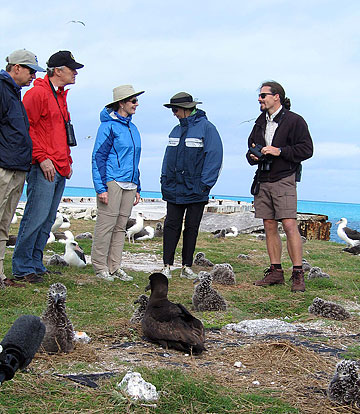 | |||||||||||
|
|
Bush walked and rode in golf carts around the two largest islands in Midway Atoll, Sand and Eastern, learning about the bird and marine life that flourishes here and the historic battle that turned the tide for the U.S. in the Pacific during World War II. In an exclusive interview with the Star-Bulletin, she said she supports funding for the monument that will preserve both its unique wildlife and cultural and its historical heritage. Bush spoke in favor of speeding the cleanup of lead paint that is poisoning some birds when they eat chips of paint from old Navy buildings. The U.S. Fish and Wildlife Service has estimated that the work will cost $6 million but has not been budgeted.
"It's a really huge thrill to have this opportunity," she said. "I mean, this is what we were all calling, including our Secret Service (agents), a once-in-a-lifetime" experience. "Well, it's so remote, I guess there never would be -- I hope there never would be -- any large amount of tourism here," she said over a morning coffee at the island's restaurant before starting on her tour. She also said she supports scientific research in the area, to learn more about it. "I think it's interesting for scientists and researchers to be able to come here and to really learn how -- what we can do to manage conservation and to protect this area in the best way we possibly can," she said. Bush said she has been an avid bird-watcher all her life, but she does not keep a checklist of birds she has seen, as some birders do. She noted that she had never before seen any of the three albatrosses she saw yesterday: the Laysan albatross, the rarer black-footed albatross and the only golden albatross in the country. Asked if she had volunteered to make this trip, Bush did not hesitate in answering, "Absolutely."
© Honolulu Star-Bulletin -- https://archives.starbulletin.com
| Tools
| |||||||||
 | |||||||||||



